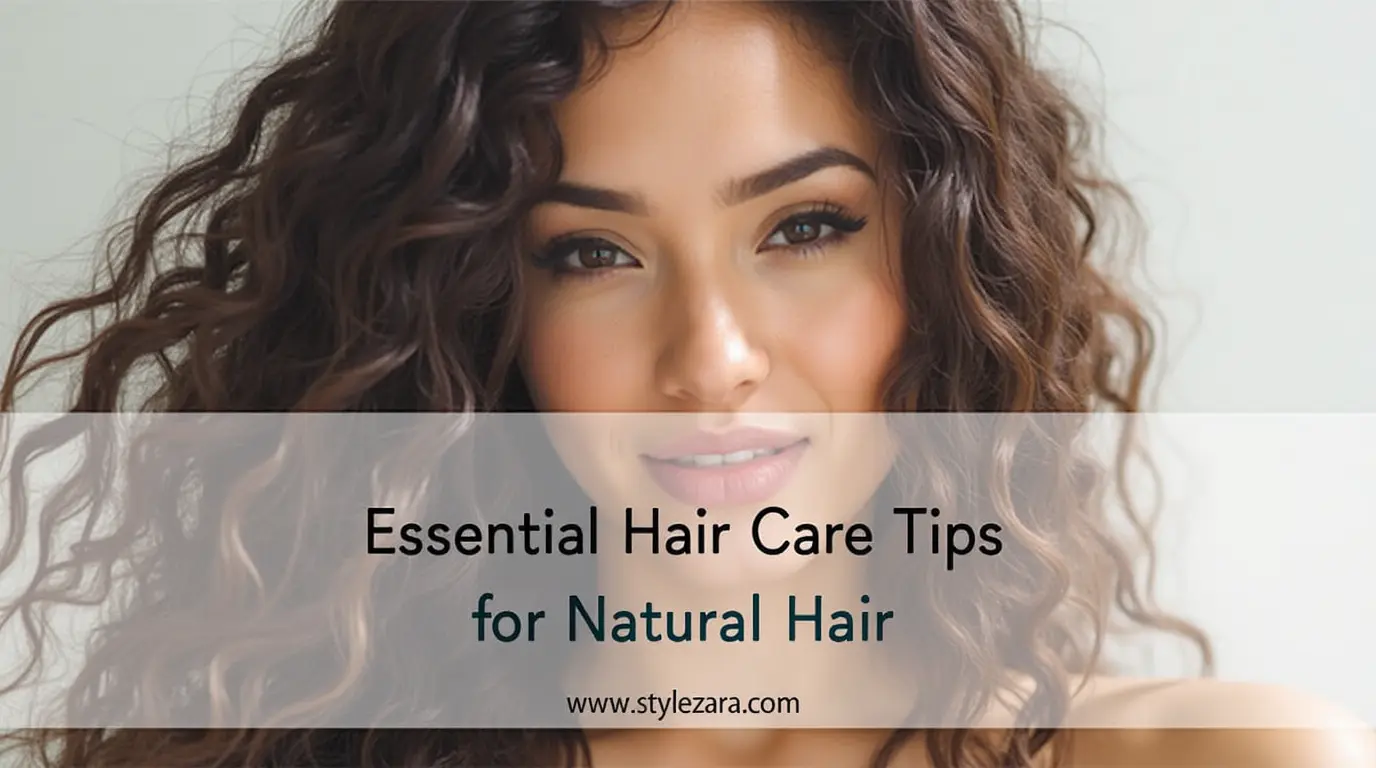Essential Hair Care Tips for Natural Hair
Maintaining natural hair can be both empowering and challenging. The uniqueness of each hair type demands tailored care routines, especially for those transitioning from relaxed to natural. Understanding the specific needs of your curls, coils, or waves can unlock the secrets to healthy and vibrant hair. Let’s explore some essential hair care tips for natural hair that will help you embrace and nurture your crown.
Key Takeaways:
- Understanding your hair type is crucial for effective care.
- Moisture retention is vital for low-porosity hair.
- Natural treatments help avoid harmful chemicals.
- Gentle handling prevents breakage and promotes growth.
- Protective styles preserve the health of your hair.
1. Know Your Hair Type
The foundation of any hair care routine is understanding your hair type. Natural hair comes in various textures, often categorized by curl patterns ranging from 3A to 4C. The curlier the hair, the more prone it is to dryness due to the difficulty of natural oils traveling down the hair shaft. Once you identify your hair type, you can select products and methods that cater specifically to its needs.
2. Embrace the Transition from Relaxed to Natural
Transitioning from relaxed to natural hair is a journey that requires patience and commitment. It involves allowing the chemically processed parts of your hair to grow out while taking extra care of the fragile line between the two textures. During this phase, deep conditioning, protein treatments, and gentle detangling are essential to maintaining healthy hair while minimizing breakage.
3. The Importance of Moisturizing
Dryness is one of the most common challenges faced by individuals with natural hair. Proper moisture retention ensures that your hair stays soft, manageable, and less prone to breakage. Use water-based leave-in conditioners and seal your hair with oils such as jojoba, argan, or coconut oil. Hydration should always be a priority in your routine, especially for those with low-porosity hair.
4. Low-Porosity Care for Natural Hair
If you have low-porosity care for natural hair, your hair cuticles are tightly closed, making it difficult for moisture to penetrate. This means you may struggle with product buildup or dryness even after moisturizing. Steaming your hair or using heat during deep conditioning can open the cuticles and allow moisture to seep in. Lightweight, water-based products are your best friends, as they won’t sit on top of your hair and cause buildup.
Table: Moisture Retention for Different Hair Porosities
| Hair Porosity | Moisturizing Tips | Recommended Products |
|---|---|---|
| Low Porosity | Use heat for deep conditioning, light oils | Water-based leave-in conditioners |
| Medium Porosity | Retain moisture easily, balance protein treatments | Moisturizing creams, oils |
| High Porosity | Needs frequent moisturizing, seal with heavier oils | Deep conditioners, shea butter, castor oil |
5. Natural Hair Treatments for Healthy Growth

Using natural hair treatments is a great way to nourish your hair without the risks associated with chemical-laden products. Ingredients such as aloe vera, avocado, and honey can serve as potent conditioners and strengthen your hair. Additionally, protein treatments, such as egg masks or hydrolyzed keratin, help to rebuild and fortify weak hair strands, promoting healthy growth.
6. Protective Styles: Safeguarding Your Hair
Protective styles such as braids, twists, or wigs help in reducing daily manipulation of the hair, thus preventing breakage and maintaining length. However, these styles must be done correctly. Tight braids can lead to traction alopecia, a form of hair loss. Always ensure that your scalp remains clean and moisturized even while in protective styles to prevent damage.
7. Avoid Heat Damage
While using heat tools like straighteners and blow dryers can be tempting for versatility, frequent use can cause irreversible heat damage. To protect your natural hair, always apply a heat protectant before styling and try to limit the use of heat to special occasions. Air drying and heatless styling methods, such as twist-outs or braids, are great alternatives for styling without compromising the health of your hair.
8. Detangling Techniques for Natural Hair
Detangling can be a frustrating part of natural hair care, but the right techniques can make a world of difference. Always detangle on damp or wet hair using a wide-tooth comb or your fingers to minimize breakage. Start from the ends and work your way up to the roots. Applying a leave-in conditioner or detangling spray can help smooth the process and reduce tension on your strands.
9. Gentle Shampooing and Conditioning Routine

Natural hair doesn’t need to be washed as frequently as other hair types, but when you do wash it, focus on maintaining moisture. Use sulfate-free shampoos to cleanse your scalp without stripping it of its natural oils. Follow up with a rich, hydrating conditioner to keep your hair soft and manageable. Co-washing, which is using conditioner instead of shampoo, is also a great option to refresh your hair without drying it out.
10. Eating for Hair Health
The foods you consume play a significant role in the health of your hair. A diet rich in vitamins and minerals, particularly biotin, vitamin E, and omega-3 fatty acids, can promote stronger, shinier hair. Drinking plenty of water is also essential to keep your hair hydrated from the inside out.
FAQs
1. How often should I moisturize my natural hair?
For low-porosity hair, moisturize every 2-3 days, sealing with light oils. High-porosity hair may require daily moisture, sealed with heavier oils or butters.
2. Can I color my natural hair without damaging it?
Yes, but you should prepare with deep conditioning treatments and ensure that you use color-safe, moisturizing products afterward to maintain hair health.
3. What’s the best way to trim natural hair?
It’s best to trim natural hair every 3-4 months, either by dusting the ends yourself or visiting a professional. Trimming prevents split ends and keeps your hair healthy.
4. How can I prevent shrinkage?
Shrinkage is natural for curly hair types, but stretching methods like braiding, banding, or twist-outs can help minimize the appearance of shrinkage.
5. What oils are best for low-porosity hair?
Lightweight oils like jojoba, grapeseed, or argan oil are ideal for low-porosity hair, as they can penetrate the hair shaft without causing buildup.
Nurturing your natural hair requires a dedicated routine, but the rewards of healthy, vibrant curls are well worth the effort. By following these essential hair care tips for natural hair, you’ll ensure that your hair remains strong, hydrated, and resilient through every stage of its growth.

